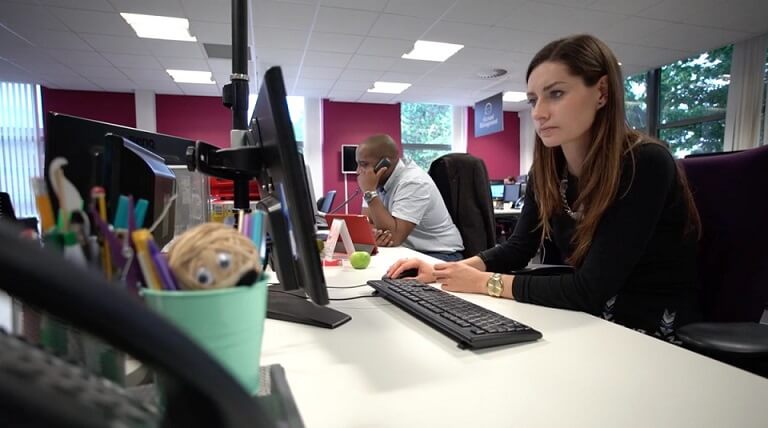
Ever wondered how long on average a viewer will spend on a webpage? According to research, it is less than a minute – 59 seconds to be exact. This may sound like an alarmingly short amount of time, but it could explain high bounce rates and low conversion for your website.
Though the internet is vast, the desirable spots (the first page of results on a search engine) are saturated with an abundance of renowned and reputable websites. From the moment a user hits enter on a search engine, you are competing to get their attention. But getting them to click on your website via a search engine is only half the task; the real feat is keeping them on your site and converting them into customers.
After building countless websites for numerous clients, we know that the final product should not only attract viewers, but it should also retain them. Established brands spend a lot of time and a lot of money on their websites. With your site often serving as the first point of contact between your business and potential customers, investing time to ensure its attractive and engaging should increase time spent on your website and further increase chances of users to return. Here are some of the most common reasons why users leave websites:
You’re slow
We are living in an age of high speed internet, instant photo uploads and effortless video streaming. It shouldn’t surprise you that many users will leave your site if it is too slow, but did you know you could be losing almost half of your visitors?
Data by Kissmetrics unveiled that 47% of visitors expect a website to load in less than 2 seconds, with 40% of users leaving a website if the loading time is over 3 seconds. Spending time and money on content and design will effectively go to waste if a user leaves the site before it loads. Additionally, you’ll be penalised by Google which takes into account loading time when ranking web pages on its results page. Put simply, the better the user experience, the higher the rank on Google – so, if performance is poor, not only are users more likely to leave your site, they’re less likely to find it through a search engine in the first place. Even if your web page is image-heavy, by optimising your images and implementing compression, you can and should ensure it is loading in under 3 seconds.
Clickbait
All businesses desire traffic on their website, but the real aim should be the right traffic. Though it may seem tempting to use exaggerated, attention-grabbing titles, misleading your users is not beneficial for your website. Firstly, you want to have users who will convert into customers. If the content is interesting, but completely irrelevant to your business, you’ll be pulling in users who aren’t your target audience or potential customers.
Secondly, if they are relevant users and have landed on your site, poor quality and misleading titles will reduce your credibility in their eyes. Unfortunately, once you lose a user’s trust, it’s incredibly difficult to get back. High quality content will support your credibility online and attract the rights viewers.
Visual Design
Though we are taught that style shouldn’t surpass substance, it’s difficult to deny the importance of appearance: a recent Stanford Study unveiled that 94% of visitors’ first impressions of a website were based solely on the visual design.
A company’s website is a representation of the brand online. Would you really be convinced that a company is as ‘fresh’ and forward thinking if their site isn’t fully optimised for use on a mobile device? Would you want to buy from a brand whose website looks like it was designed 10 years ago? Probably not. Your website is a marketing tool, so engage users with both visual and written content that paints a positive picture of your brand.
Congested Web Pages
If you have ticked off all the factors above but are still struggling to keep users on your site, you may be overlooking a fundamental step: keeping your website easy to navigate and clearly telling your users what to do.
Converting readers into customers happens when a website guides users from the awareness stage to the consideration and potential purchase stages. A common mistake is to overload your homepage with information in a bid to convince users of your value. However, congesting your web pages with excess information often serves as an obstacle in the user journey and distracts users from their purpose on the site.
Guide your users on the next step of their journey, by keeping clear and easy to see call to actions. By linking your pages and directing customers to items they may be interested in, whether it’s relevant offers or content, you can keep users on your site which increases chances of conversion. With 50% of visitors using a navigation menu to orient themselves on a company website, by providing contact information, products and services in a clear navigation menu, you can increase interaction with multiple web pages within your website.
Time isn’t on your side when you are selling your services or products online. With under a minute to project the best visual representation of your brand, design, functionality and UX should always be a priority in the building process. We always advise our clients to consider these factors when building their website, and further encourage them to test with Google Analytics to highlight and address areas of under performance. If you’re unsure about your website performance, or would like to improve it, get in touch with our experienced web design team.



